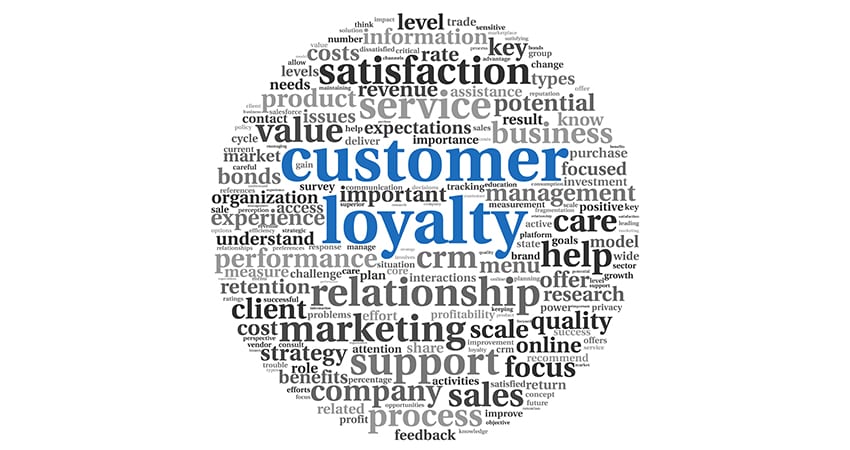Have you ever experienced a “moment” when interacting with a business? Did a waiter at your favorite restaurant remember your birthday? Have you ever tried a new coffee house and discovered unique work spaces with ergonomic chairs? Perhaps an insurance adjuster took extra time to make sure you were taken care of after an accident?
The one thing that all of these examples have in common is that they did not take place as the direct result of a purchase. Yet for most people, these types of experiences leave a lasting impression in terms of how they perceive a brand and there is increasing awareness of how these experiences ultimately lead to increased sales.
Shopper acquisition & loyalty
Think of it as shopper acquisition. If omnichannel marketing has become about enticing the shopper to come in so they have a positive and memorable brand experience, then shopper acquisition is about creating an experience once they are there. The goal is for the customer to enjoy the brand and remember the brand when it comes time to make a purchase. It’s all about building emotional connections and aggressive brand loyalty through unique experiences that stick with the recipient even if a person is not making a purchase at that specific moment.
It’s what Nordstrom has done with their new brand: Nordstrom Local. Nordstrom Local is a concept store that offers a ton of experiences including working with a stylist and virtually trying on specialty clothing – all without any purchases actually taking place. The entire goal is to reinforce and strengthen the positive perception of the Nordstrom brand to the point where a consumer remembers that experience and will ultimately make a purchase through Nordstrom.com, through a physical store or through Nordstrom Rack. The experience takes ‘window shopping’ to a whole new level!
Building customer loyalty, one experience at a time
So exactly what is the planned customer journey at the core of this type of experiential marketing? Think about this example: Doubletree Hotels offers warm cookies when a guest checks in. The strategy behind this effort looks like this: Here’s a surprise that makes you feel good. And when you feel good, you create a positive memory that’s associated with the brand.
Today retailers are working towards applying this type of strategy across all channels, even those where no sales might occur. And while every channel adds opportunities to communicate the value of your brands through unique and special experiences, it can also destroy your brand when these experiences are flawed in their execution. If your store offers a day at the spa, what is the last memory if the spa staff is rude and delivers poor service? What if the technology you are using has poor load times on older browsers? To successfully deliver on an experiential model, every experience in every channel needs to live up to the brand promise.
Focusing on the experience requires attitude change
Most likely, a significant attitude change will be needed from employees to ensure that your brand is performing on the promise of any new experiences that you plan to deliver. You will need to make sure your employees are engaged with the new promise, and then check to see if they are meeting consumer expectations in their new roles.
There are also many other factors that may be out of your control. When partnering to deliver a new experience, you will need to consider carefully who you are co-locating with and how well those brands are monitored. The old mantra, “Location! Location! Location!” now carries even more weight than it did before, as we’re talking about anywhere your brand lives and not simply just in the stores anymore. Remember that even your website and mobile apps are places where ‘location, location’ apply. Search ranking is just one example, including how exactly your products show up in search results. But also correct pricing and the right photos will determine the customer experience on different devices (mobile!).
Monitoring brand promises across channels becomes critical
That brings us to an even bigger question: How do you measure the broad scope of experiential metrics necessary to ensure your brand promise is placed with a big red bow directly in front of consumers everywhere and every time? The answer is multichannel mystery shopping. Mystery shoppers can validate exactly how consumers are experiencing your brand across every channel.
When deployed properly across multiple channels mystery shoppers can keep tabs on every customer experience by answering questions such as these:
- How was today’s website visit? Did you find what you were looking for easily?
- What type of environment surrounds the store you visited? Busy, calm? Clean, dirty?
- What other brands are in the immediate vicinity of the store front that you visited? Coffee shops, restaurants, retailers?
- Did this brand truly deliver a memorable experience that made you feel special today?
- Are there any potential liabilities that could damage this brand experience, including employees, technology or geography?
- Is everything working in tandem to create the “moment” that will stick with consumers long after their direct interaction with the brand?
Gartner believes that the customer experience is a new competitive battlefield. Their data shows that 89% of companies were expecting to compete mostly on the basis of customer experience in 2016, versus 36% four years ago. Gartner also estimated that 50% of consumer product investments will be redirected to customer experience innovations this year. When it comes to an experience that lives outside of the purchase, there are simply too many competitors looking for a slice of the same pie.
Lisa van Kestersen is the CEO and Founder of SeeLevel HX,

